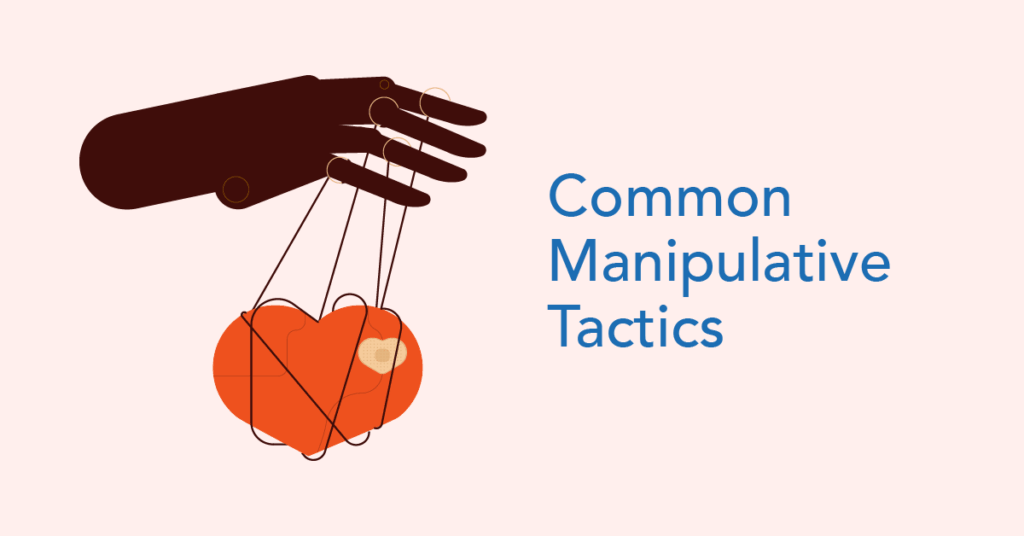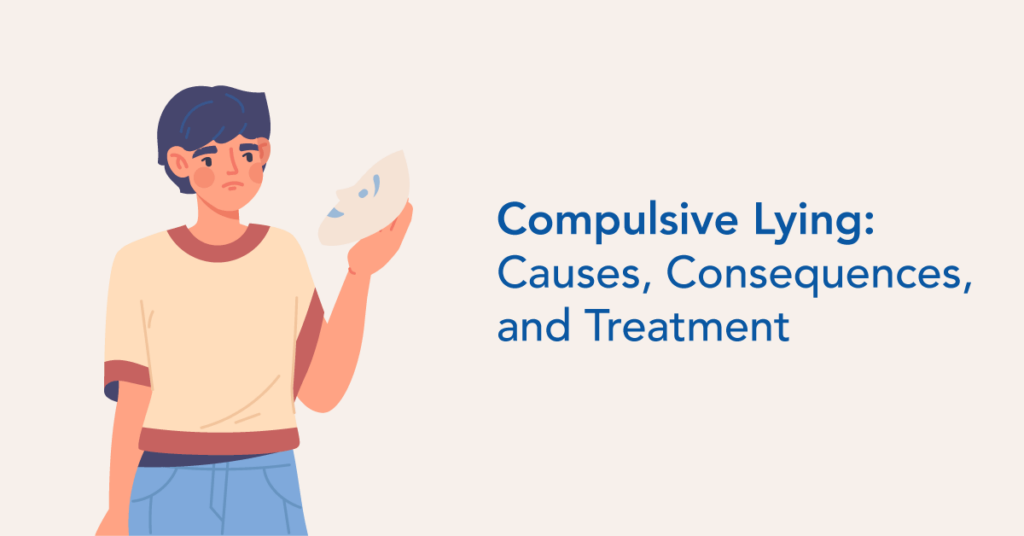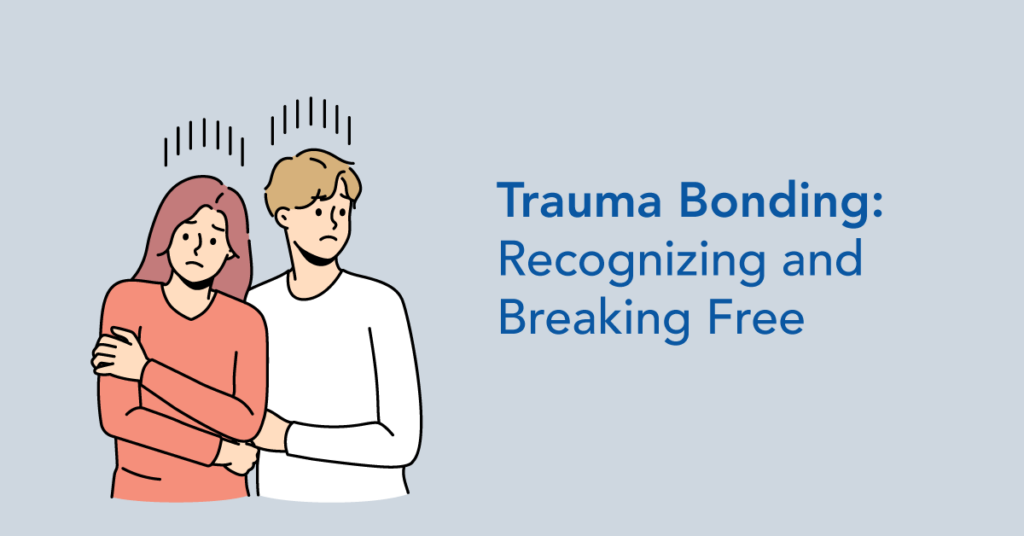Manipulation tactics are strategies people use to influence or control others through deception, guilt or emotional coercion — often without the other person realizing it’s happening.
Whether in relationships, workplaces or families, manipulative behaviors can be subtle and confusing. You might walk away from a conversation feeling responsible for something that wasn’t your fault or doubting your own memory of what happened. Over time, these tactics can erode your confidence and sense of self.
Understanding how people manipulate is the first step to protecting your mental health and setting boundaries. This guide breaks down the most common manipulation tactics and how to recognize them in your life.
What Does It Mean to Manipulate Someone?
To manipulate someone is to influence their thoughts, emotions or actions in a deceptive or self-serving way. It usually involves dishonesty, control and exploitation and is often disguised as care or reason.
Manipulators may:
- Twist facts to suit their needs
- Play on your fears, insecurities or empathy
- Create confusion or self-doubt
- Pressure you into decisions you’re not comfortable with
While everyone may use persuasion from time to time, manipulation tactics cross the line when they ignore consent, truth and emotional safety.
Why Do People Use Manipulative Behaviors?
People use manipulative behaviors for different reasons. Some do it intentionally to maintain power or get their way. Others learned these patterns in childhood or after trauma and may not even realize they’re being manipulative.
Motivations can include:
- Control or dominance
- Avoiding accountability
- Fear of rejection or abandonment
- Desire to win or get ahead
- Emotional immaturity or insecurity
Regardless of intent, manipulation causes harm — especially when it becomes a regular pattern.
Common Manipulation Tactics
Here are some of the most frequent and damaging manipulation strategies to watch out for.
1. Gaslighting
Gaslighting is when someone denies your reality, memories or feelings to make you doubt your perception of the truth.
Examples:
- “That never happened.”
- “You’re being too sensitive.”
- “You always make things up.”
Over time, gaslighting can cause you to question your sanity and rely more on the manipulator’s version of events.
2. Guilt-Tripping
This tactic uses guilt to control your actions or decisions.
Examples:
- “After everything I’ve done for you…”
- “If you really cared about me, you’d…”
- “I guess I’m just not important to you.”
Guilt-tripping exploits your empathy to get compliance, often by painting the manipulator as a victim.
3. Love Bombing
Love bombing occurs when someone overwhelms you with affection, praise or attention in the early stages of a relationship to quickly gain trust.
It might feel flattering at first, but once they feel secure in the relationship, it’s often followed by control, criticism or emotional withdrawal.
4. Silent Treatment
Withholding communication to punish or control someone is a classic manipulation tactic. It creates anxiety and confusion, especially if you’re left guessing what went wrong. The silence is used as leverage to make you feel at fault.
5. Triangulation
Triangulation involves bringing a third party into a conflict to pressure or discredit you.
Examples:
- “Even your sister agrees with me.”
- “Everyone thinks you’re being unreasonable.”
- “My therapist says I’m not the problem here.”
This shifts focus away from the manipulator’s behavior and creates insecurity.
6. Projection
A manipulator may accuse you of the very things they’re doing.
Examples:
- They lie but call you dishonest.
- They cheat but accuse you of infidelity.
- They act distant but say you’re the one pulling away.
Projection creates confusion and deflects accountability.
7. Passive-Aggression
Instead of addressing issues directly, passive-aggressive behavior involves subtle digs, sarcasm or backhanded compliments.
Examples:
- “Nice of you to finally show up.”
- “I guess I’ll just do everything myself again.”
- “Wow, you’re really wearing that?”
It allows the manipulator to express anger while denying it.
8. Moving the Goalposts
You meet one demand but suddenly, the expectations change.
Examples:
- “That’s not what I meant.”
- “You still didn’t do it right.”
- “If you really cared, you’d do more.”
This tactic keeps you off balance and constantly trying to prove yourself.
9. Minimizing or Dismissing
Minimizers downplay your feelings or concerns.
Examples:
- “You’re overreacting.”
- “It’s not that big of a deal.”
- “You’re too emotional.”
It invalidates your experience and avoids meaningful dialogue.
10. Playing the Victim
Manipulators may shift blame or twist the narrative to make themselves appear mistreated, even when they’re the ones causing harm. It can make you question your actions and feel guilty for setting boundaries.
Effects of Manipulation on Mental Health
Long-term exposure to manipulation tactics can impact your well-being in serious ways, including:
- Low self-esteem
- Chronic self-doubt
- Anxiety or depression
- Hypervigilance in relationships
- Difficulty trusting others
- Feeling powerless or emotionally drained
Many people in manipulative environments begin to isolate themselves or lose touch with their own needs and boundaries.
How to Protect Yourself From Manipulation
Recognizing the signs is the first step. Here’s how to protect your emotional safety:
- Set boundaries. Know what’s okay and what isn’t — and communicate it clearly.
- Stay grounded in your reality. Keep a journal or talk to trusted friends to validate your experiences.
- Limit engagement. You don’t have to argue or prove yourself to someone using manipulation tactics.
- Seek support. Therapy can help you rebuild confidence and identify unhealthy patterns.
- Don’t internalize. You’re not responsible for someone else’s behavior, no matter how they spin it.
When to Get Help
If manipulation is part of an abusive relationship, workplace or family dynamic, support is available. You don’t have to navigate it alone. Therapists, domestic violence advocates and hotlines can help you plan your next steps.
If you’re unsure what’s happening or feel emotionally unsafe, reach out to the Mental Health Hotline for free, confidential support.
Frequently Asked Questions
To manipulate someone means to influence or control them through deceptive, coercive or emotionally abusive tactics that serve the manipulator’s interests over the other person’s well-being.
Some of the most common tactics include gaslighting, guilt-tripping, love bombing, silent treatment, triangulation, projection and minimizing. These tactics create confusion, shame or self-doubt in the target.
If you consistently feel confused, guilty, anxious or like you’re walking on eggshells after interactions with someone, manipulation may be at play, especially if it’s a pattern of behavior and not just an isolated incident.
Emotional manipulation involves using guilt, fear or affection to control someone’s feelings or behavior. It often leaves the person being manipulated feeling drained, responsible or confused.
Some people manipulate without realizing it, often because they learned it in childhood or after trauma. Intent matters, but the impact is still harmful — and it’s okay to set boundaries either way.
You Don’t Owe Anyone Your Peace of Mind
Manipulation isn’t always loud or obvious. Sometimes it wears the mask of love, concern or logic — but the result is the same: You feel smaller, uncertain and controlled. If you’re feeling overwhelmed, stuck or unsure of what’s happening, the Mental Health Hotline is here to help. Call us anytime for free, confidential guidance. We’ll listen without judgment and help you find support that makes sense for your life and your healing.
Editorial Team
-
 Written By: MHH
Written By: MHHMental Health Hotline provides free, confidential support for individuals navigating mental health challenges and treatment options. Our content is created by a team of advocates and writers dedicated to offering clear, compassionate, and stigma-free information to help you take the next step toward healing.
-
 Reviewed By: Raymond Castilleja Jr., LCSW-S
Reviewed By: Raymond Castilleja Jr., LCSW-SRaymond Castilleja Jr., LCSW-S, MBA, MHSM is a behavioral health executive with over a decade of leadership experience in integrated care and nonprofit health systems. As Director of Behavioral Health at Prism Health North Texas, he oversees strategic planning, clinical operations, and service delivery for a program serving the LGBTQ+ community. He has led the successful integration of behavioral health into primary care and played a pivotal role in securing $5 million in SAMHSA...


